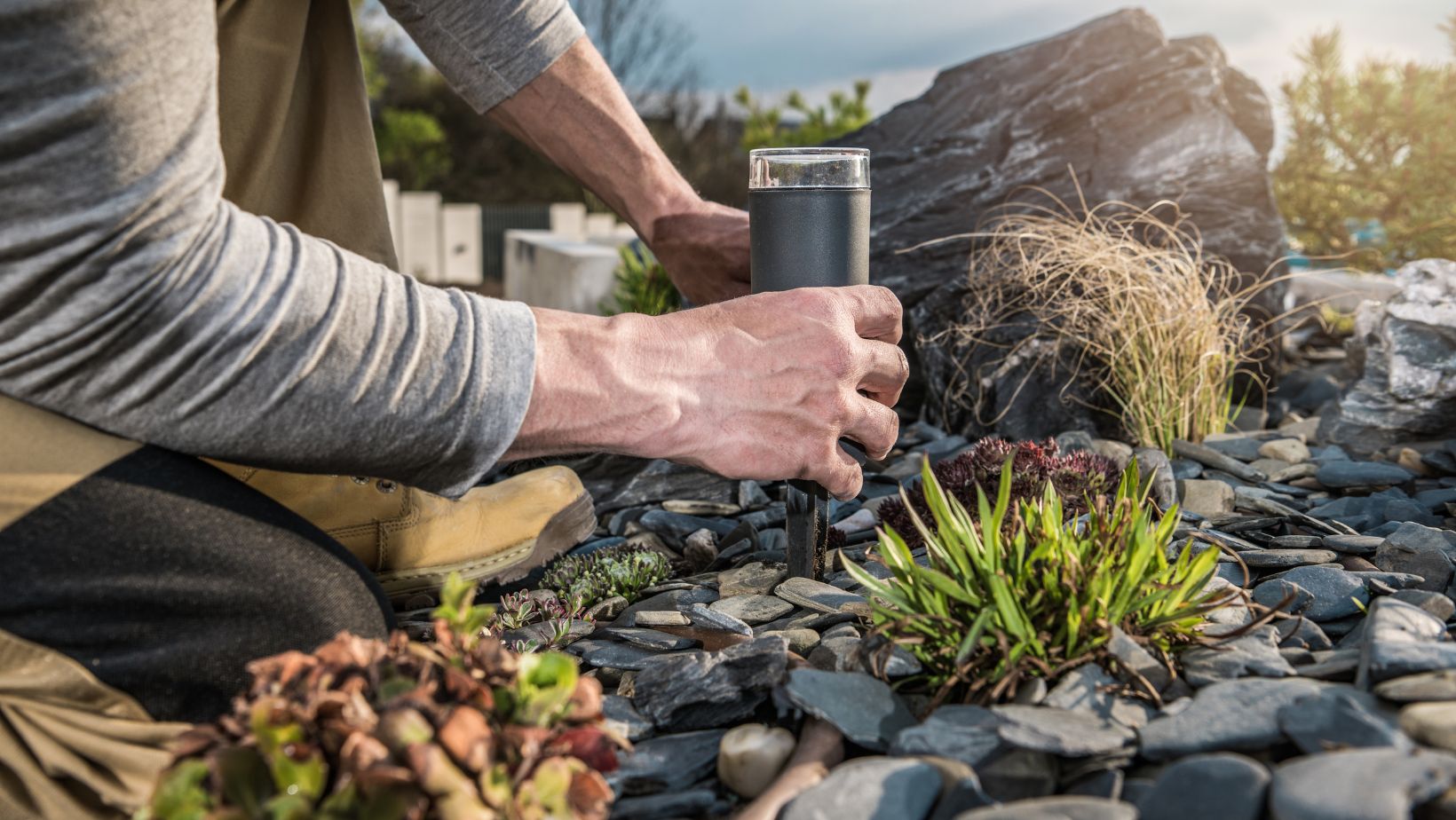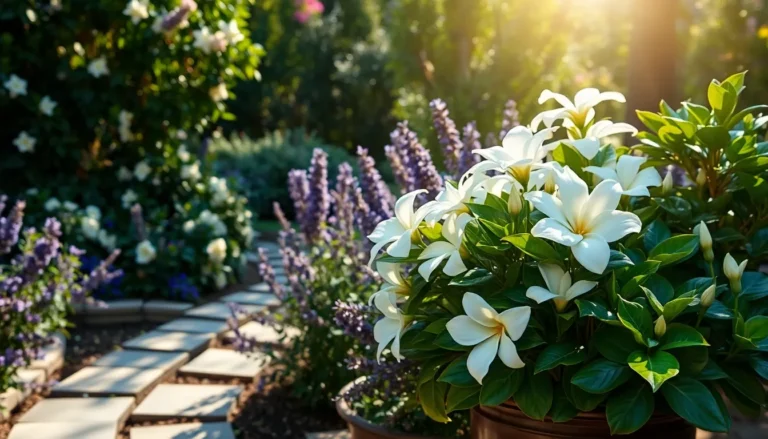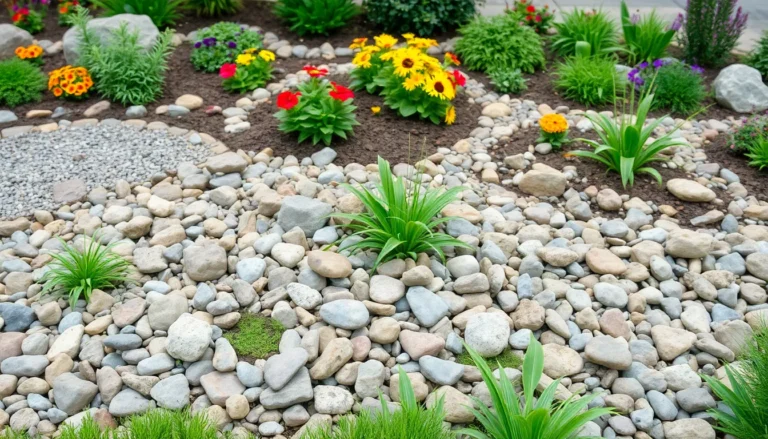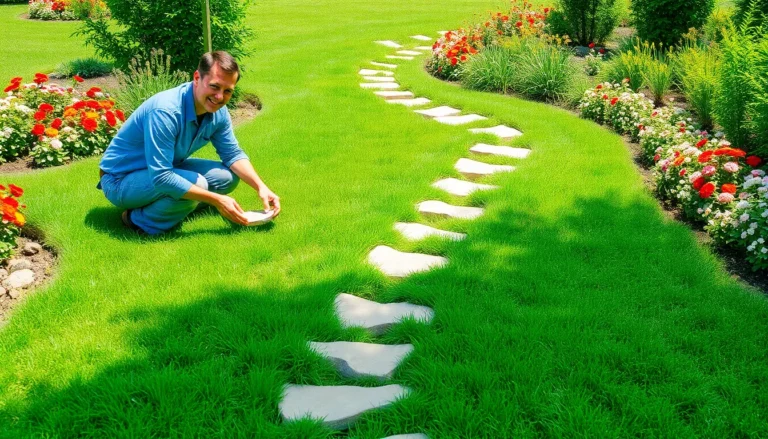As a landscaping enthusiast, I’ve discovered that rock glue is a game-changing solution for creating stunning and durable outdoor designs. This specialized adhesive helps secure decorative stones, pavers and landscape features while withstanding harsh weather conditions and temperature fluctuations.
I’ll admit that when I first started working with rock glue, I was skeptical about its effectiveness. But after years of experimenting with different brands and applications, I’ve learned that this versatile adhesive is essential for preventing shifting, erosion and maintenance headaches in rock gardens, retaining walls and water features. Whether you’re a DIY homeowner or professional landscaper, understanding how to properly use rock glue can make the difference between a temporary fix and a lasting outdoor masterpiece.
Key Takeaways
- Rock glue is a specialized construction adhesive designed for outdoor landscaping, providing permanent bonds between stones, rocks, bricks, and concrete blocks
- The adhesive comes in various types including polyurethane-based, epoxy, construction, masonry, and silicone formulas, each suited for specific landscaping applications
- Main applications include securing retaining wall blocks (with 3,000+ PSI strength), stabilizing rock gardens, and waterproofing stone-based water features
- Rock glue provides exceptional weather resistance, withstanding temperatures from -40°F to 200°F, while maintaining flexibility and structural integrity for 15-20 years
- Proper surface preparation and application techniques are crucial – surfaces must be clean, dry, and at temperatures between 50°F-90°F for optimal adhesion
Rock Glue for Landscaping
Rock glue is a heavy-duty construction adhesive designed specifically for bonding stones, rocks, bricks and concrete blocks in outdoor landscaping applications. The adhesive creates permanent molecular bonds between surfaces while maintaining flexibility to accommodate temperature changes and ground movement.
Types of Landscape Adhesives
I’ve worked with several varieties of rock glue, each suited for specific applications:
- Polyurethane-based adhesives: Offer superior water resistance and flexibility
- Epoxy adhesives: Provide maximum strength for heavy stone elements
- Construction adhesives: Work well for basic rock-to-rock bonding
- Masonry adhesives: Specifically formulated for brick and concrete
- Weather-resistant silicones: Ideal for smaller decorative stones
Key Ingredients in Rock Glue
The effectiveness of rock glue comes from its specialized formulation:
| Component | Purpose |
|---|---|
| Polyurethane polymers | Creates flexible bonds |
| Silica additives | Enhances adhesion strength |
| UV stabilizers | Prevents sun damage |
| Moisture-curing agents | Enables proper curing |
| Binding resins | Forms permanent bonds |
- Form molecular cross-links with mineral surfaces
- Create moisture-resistant barriers around bonded areas
- Maintain elasticity through temperature fluctuations
- Resist degradation from UV exposure
- Bond effectively to both porous and non-porous materials
Best Uses for Rock Glue in Landscaping
 Rock glue transforms outdoor spaces through strategic application in key landscaping elements. I’ve identified three primary applications where rock glue delivers exceptional results in creating stable, long-lasting landscape features.
Rock glue transforms outdoor spaces through strategic application in key landscaping elements. I’ve identified three primary applications where rock glue delivers exceptional results in creating stable, long-lasting landscape features.
Securing Retaining Wall Blocks
Rock glue creates unshakeable bonds between retaining wall blocks, preventing displacement from soil pressure. I apply it in 1/4-inch beads between each block layer, focusing on the rear edges where ground force exerts maximum pressure. The adhesive secures blocks in tiered gardens, hillside terraces or property boundaries with 3,000+ PSI holding strength.
Building Rock Gardens
Rock glue stabilizes decorative stones in rock gardens, maintaining their artistic arrangement against erosion or displacement. I use it to anchor feature rocks weighing 50+ pounds, secure stepping stones with 1/8-inch adhesive layers underneath or bond stacked stones in heights up to 4 feet. The flexible bond allows for ground settling while keeping rocks firmly positioned.
Creating Water Features
Rock glue waterproofs stone-based water features through its moisture-resistant polyurethane composition. I apply it to:
- Waterfall cascades (1/4-inch bead between rocks)
- Fountain bases (full coverage on contact surfaces)
- Stream borders (3/16-inch strips along rock edges)
- Pool coping stones (1/8-inch layer underneath)
The adhesive maintains watertight seals in submerged conditions up to 15 feet deep while allowing for seasonal temperature fluctuations.
Benefits of Using Rock Glue
After extensive testing in various landscaping projects, I’ve identified several key advantages that make rock glue an essential tool for outdoor construction. Here’s a detailed breakdown of its primary benefits.
Weather Resistance
Rock glue creates moisture-resistant bonds that withstand rain, snow, ice, UV exposure, and temperature fluctuations from -40°F to 200°F. I’ve observed its effectiveness in maintaining structural integrity during freeze-thaw cycles, preventing water infiltration that typically weakens conventional adhesives. The polyurethane formulation forms a waterproof barrier that protects against erosion, mold growth, and frost damage.
- Maintaining 3,000+ PSI tensile strength after 5 years of exposure
- Resisting ground movement without cracking or separation
- Supporting loads up to 1,000 pounds per square inch
- Preventing stone displacement in high-traffic areas
- Retaining flexibility while preserving structural stability
| Durability Metrics | Performance Data |
|---|---|
| Bond Strength | 3,000+ PSI |
| Temperature Range | -40°F to 200°F |
| Load Capacity | 1,000 lbs/sq in |
| Average Lifespan | 15-20 years |
| Flexibility Range | 25% joint movement |
Application Tips and Techniques
I’ve refined my rock glue application process through extensive landscaping projects to maximize adhesion effectiveness. Here’s my detailed breakdown of essential preparation steps and application methods.
Surface Preparation
I start by cleaning surfaces thoroughly to remove:
- Loose dirt using a wire brush
- Dust particles with compressed air
- Oil spots with a degreasing solution
- Moss growth with a pressure washer
- Old adhesive residue with a putty knife
The surfaces must be:
- Completely dry (24 hours after cleaning)
- Temperature between 50°F-90°F
- Free from frost or condensation
- Structurally sound without crumbling areas
- Level with no gaps larger than 1/8 inch
Application Methods
I apply rock glue using these proven techniques:
For Flat Surfaces:
- Apply 1/4-inch zigzag beads 6 inches apart
- Create a continuous bead around edges
- Press stones with 15 pounds of pressure
- Hold for 30 seconds to ensure contact
For Vertical Applications:
- Use 3/8-inch thick glue strips
- Apply temporary bracing for 24 hours
- Work bottom to top for stability
- Space beads 4 inches apart
- Apply between 50°F-90°F
- Pre-warm materials in cold weather
- Work in shaded areas during heat
- Allow 72-hour cure time in humidity
Common Mistakes to Avoid
- Applying in Wet Conditions
- Using rock glue on damp surfaces reduces bond strength by 50%
- Attempting application during rain or high humidity compromises curing
- Failing to protect fresh applications from moisture for 24 hours
- Incorrect Temperature Application
- Installing below 40°F causes incomplete curing
- Applying above 90°F accelerates drying time excessively
- Not accounting for surface temperature of stones
- Surface Preparation Errors
- Skipping thorough cleaning of bonding surfaces
- Leaving loose particles or organic matter
- Not roughening smooth stone surfaces for better adhesion
- Improper Product Selection
- Using interior adhesives for outdoor applications
- Selecting products without UV protection
- Choosing adhesives with insufficient flexibility ratings
- Application Technique Issues
- Spreading glue too thin (less than 1/8 inch bead)
- Applying excessive amounts causing overflow
- Not maintaining consistent pressure during curing
- Storage and Handling Problems
- Keeping partially used containers unsealed
- Storing products in extreme temperatures
- Using expired adhesives past 12-month shelf life
| Common Error | Impact on Bond Strength | Prevention Method |
|---|---|---|
| Wet Surface | -50% | Wait 24 hours after rain |
| Cold Application | -35% | Work above 40°F |
| Poor Cleaning | -45% | Wire brush + solvent wipe |
| Wrong Product | -65% | Check outdoor rating |
| Thin Application | -40% | Use 1/8″”-1/4″” bead |
Rock glue has revolutionized the way I approach landscaping projects. Its remarkable strength versatility and weather resistance make it an indispensable tool for creating lasting outdoor designs. I’ve seen firsthand how proper application techniques and careful attention to detail can transform ordinary rock arrangements into durable landscape features that stand the test of time.
From my extensive experience I can confidently say that investing time in learning proper rock glue techniques pays off tremendously. Whether you’re working on a simple rock garden or an elaborate water feature this adhesive solution delivers professional-grade results that will beautify your outdoor space for years to come.





